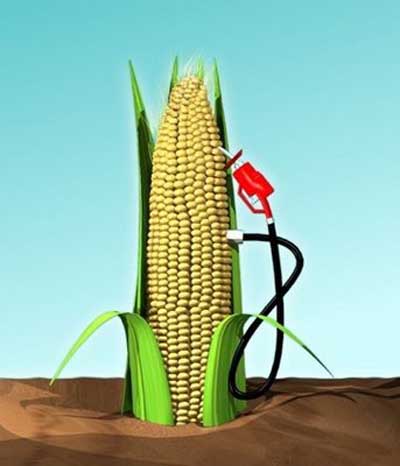The once-unthinkable actually happened last Thursday: The U.S. Senate voted 73-27 to abolish a 45-cents-per-gallon subsidy to the U.S. ethanol industry.
Immediately.
Because the amendment to end ethanol credits is attached to a stalled economic development bill, however, it will have little practical effect.
The measure represents the first time the Senate has taken a clear stance against ethanol subsidies, which give tax credits to gasoline blenders who use a fuel long criticized in the U.S. on economic, environmental, and food policy grounds.
The vote came amidst widespread clamor for spending cuts and deficit reduction in Washington, D.C. And it occurred just one day after a similar measure had been voted down by the Senate.
Access for Brazil?
In the same vote, the Senate also killed an import duty of 54 cents per gallon on ethanol. That means ethanol produced far more efficiently in other countries, primarily Brazil, could become competitive in the U.S. market.
Corn ethanol, as produced in the States, tops out at roughly 300 gallons of fuel per acre, whereas ethanol derived from sugar cane can reach twice that level.
Brazilian sugar-cane ethanol companies have long complained that the U.S. subsidies prop up inefficient U.S. production while preventing them from offering their supplies to U.S. gasoline blenders.
Costly corn, questionable carbon

Corn Ethanol Pump
Last year, 40 percent of U.S. corn production was used by ethanol refineries. Food groups have complained that using corn as a feedstock drives up food prices, which earlier this year reached double the level of last year's.
Environmental groups too have long criticized corn ethanol as requiring up to 7 gallons of water per gallon of fuel produced.
Given the energy intensive nature of U.S. agriculture, it's highly unclear that replacing gasoline with ethanol actually produces a net reduction in "wells-to-wheels" carbon emissions.
E15 on the way
Currently, U.S. gasoline can contain up to 10 percent ethanol (known as E10). The Environmental Protection Agency has approved the use of up to 15 percent ethanol (E15) in gasoline, though only for the 75 percent of cars on the road built in 2001 or later..
So-called blender pumps that vary the ethanol percentage in gasoline may start to show up at gas stations this summer, meaning that drivers will need to check the pumps carefully when they refuel to make sure they use a blend that's appropriate for their model year.
A Senate vote to kill funding for ethanol pumps and storage facilities to facilitate the rollout of E15 failed 51-49. The House has adopted that amendment.
The Energy Independence and Security Act passed by Congress in 2007 requires that 36 billion gallons of ethanol be used in vehicle fuel by 2022.
That's more than three times the 11.1 billion gallons used last year. This year's level is 12.6 billion gallons, and by 2015, it rises to 15 billion gallons.
MIA: energy policy

U.S. Environmental Protection Agency adminstrator Lisa Jackson and President Barack Obama
The Senate vote on ethanol comes amidst the continuing lack of any coherent U.S. energy policy, from the current or previous administrations.
The U.S. House of Representatives considers the Senate measure on ethanol to be unconstitutional, because all tax measures must originate in the House.
The Obama Administration also opposes ending the tax breaks for ethanol, though under current law, they are set to expire at the end of this year anyhow.
In other words, the subsidies will continue for now. But for the first time, the U.S. Senate has drawn a line in the sand and said, "No more."
We'll see how far that goes.
[The New York Times, Detroit News, Wall Street Journal, HuffingtonPost]
+++++++++++













